Eyewitness to
Infamy
Eyewitness to
Infamy
An Oral History of Pearl Harbor
December 7, 1941
Paul Joseph Travers
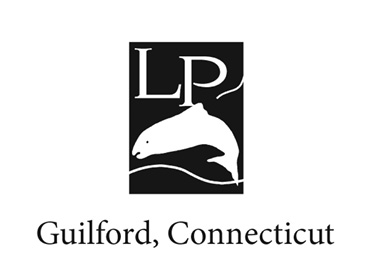

An imprint of Rowman & Littlefield
Distributed by NATIONAL BOOK NETWORK
Copyright 1991 by Paul Joseph Travers
First Lyons Press paperback edition, 2016
All rights reserved. No part of this book may be reproduced in any form or by any electronic or mechanical means, including information storage and retrieval systems, without written permission from the publisher, except by a reviewer who may quote passages in a review.
British Library Cataloguing in Publication Information Available
Library of Congress Cataloging-in-Publication Data Available
ISBN 978-1-4930-2343-1 (pbk.)
ISBN 978-1-4930-2344-8 (e-book)
 The paper used in this publication meets the minimum requirements of American National Standard for Information SciencesPermanence of Paper for Printed Library Materials, ANSI/NISO Z39.48-1992.
The paper used in this publication meets the minimum requirements of American National Standard for Information SciencesPermanence of Paper for Printed Library Materials, ANSI/NISO Z39.48-1992.
To Frances and Herman,
Loving parents whose legacy
of love and life is the greatest
gift of any survivor.
The Island of Oahu, due to its fortifications, its garrison and its physical characteristics, is believed to be the strongest fortress in the world.
General George Catlett Marshall, 1940
It was lovely.... We were about to change an island of dreams into a living hell.
Japanese pilot Tatsuya Ohtawa, on the morning of 7 December 1941
Acknowledgments
This oral history of Pearl Harbor was inspired decades ago with a handful of Pearl Harbor survivors who wanted to document their contributions to the Day of Infamy. From proposal to publication, the project was a journey encompassing thousands of hours and thousands of miles. Along the way, I made new friends and renewed old acquaintances who helped me reach journeys end. When questioned about the books publication date, I often responded with the clich that good things come to those who wait. To my friends, I can now say that the waiting has ended. I hope you enjoy reliving one of the most significant and dramatic days in American history.
I am indebted to the Pearl Harbor Survivors Association for their initial support, which allowed me to develop a network of vital contacts. Without their assistance, the book would never have been completed. I am equally indebted to the hundreds of Pearl Harbor survivors who contributed their narratives, contacts, and moral support. Their voices will live on as echoes in the wind that whisper a warning to keep America at-the-ready. A special thanks goes to Jane Warth for her skill in the art of editing; she waved her magic pencil and transformed a diamond in the rough into a sparkling gem.
I would also like to express my sincere gratitude to the following organizations who eagerly provided their assistance: the American Legion, Baltimore Magazine (for the interview with Joseph Taussig), the US Naval Academy, the US Naval Academy Alumni Association, the US Naval Historical Center, the Veterans of Foreign Wars, and Mr. Paul Cora, curator for Historic Ships in Baltimore.
Preface
We interrupt this program... For many Americans tuned to their radios on 7 December 1941, the announcement stirred only casual interest. Interruptions of this type were usually an update on the events of World War II. Those who turned an attentive ear were most likely to be first- or second-generation Americans with strong familial and patriotic ties to their country of origin. Despite the concern of the American public with military aggression across both oceans, thoughts of America entering the war were as distant as a small chain of islands in the Pacific Ocean, some three thousand miles off the coast of California. No one suspected this interruption would be the prologue to a four-year nightmare of death and destruction. Radio bulletins and newspaper headlines, which announced War with Japan and Jap Planes Bomb Oahu, stunned a suspicious, but unguarded, nation. While the announcement of war was a surprise, the way it happened was a shock.
Across the Atlantic Ocean, war was already a way of life. European powers were dueling in a life-and-death struggle, which threatened political stability around the world. To many political observers, war came as no surprise. Renewed hostilities were an inevitable continuation of World War I. The armistice on 11 November 1918 ended the first global conflict. But by 1941, Adolf Hitler had conquered the enemies of Germany and steered his war machine to the western and northern shores of the Continent.
The situation across the Pacific Ocean was even more volatile and threatening. In an effort to stop Japanese expansion into China and protect American, British, and French interests in the Far East, President Franklin D. Roosevelt in July 1941 demanded that Japan withdraw all forces from Indochina. To enforce his demands, Roosevelt ordered Japanese assets in America frozen and placed an embargo on oil supplies to Japan. When Great Britain took similar action, Japanese leaders faced a major crisis in foreign and economic policy. To agree to Roosevelts demands would be a humiliating political and military defeat. War production in Japan was already hindered by the July 1940 embargo placed on the exportation of American scrap iron and steel to Japan. Oil supplies were vital to keep the Japanese war machine rolling across Asia. If the supply of oil was cut off, Japan would be forced to abandon military activity in China. A more feasible alternative for Japan was to find a new supplier. A defensive pact with Hitler and Benito Mussolini would offer the opportunity to concentrate military resources and provided a new supplier of oil and raw materials. When Roosevelt anchored the US Pacific Fleet at Pearl Harbor, Japanese leaders saw this as the first step to armed intervention into the foreign affairs of Japan. Japan was being slowly backed into a corner by a show of force. There would be no compromise in its position. War was no longer an option; it was the only course of action.
Although Americans spoke of neutrality and prayed for peace, in their hearts they knew it was only a matter of when and where before America was drawn into the conflict. The when and where became 7 December 1941, Pearl Harbor, Oahu Island, Territory of Hawaii. The two-hour attack on Pearl Harbor had such far-reaching and lasting effects that it became an event imprinted in the minds of most Americans living at the time. For a split second, their lives stopped, and this memory was preserved in a time capsule buried in their consciousness. For decades afterward, Americans would be able to respond in detail to the question Where were you on Pearl Harbor day? However, as the date slowly receded into the past, the memory of the event slowly receded from the American memory. Although time faded the memory of that day for the majority of Americans alive during World War II, it would always be a day of memory to the servicemen, servicewomen, and civilians who were on Oahu. For most members of postwar generations, that day would mean only a few lines in a history textbook. Pearl Harbor day was associated with black-and-white newsreel footage of Roosevelt, who immortalized a day which will live in infamy in his address to a joint session of Congress on 8 December 1941.
When I first mentioned the idea of this book to people, many asked: Why write a book on Pearl Harbor? What could possibly be said that has not already been said in books and films? People often mentioned that previous historians had covered every aspect of the attack, from factual accounts to theories of conspiracy and military misconduct. Despite their efforts to complete the unabridged story of Pearl Harbor, historians overlooked one of the most obvious and important segments. The role of the participants who were directly involved in the event was somehow forgotten. Historians focused attention primarily on political and military leaders and strategy. Chronicling and documenting the participants history of the event was left incomplete.
Next page
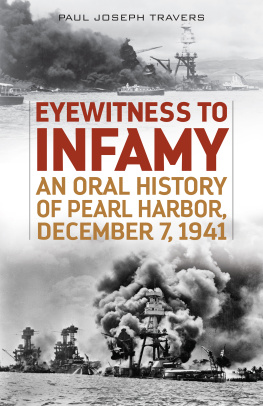
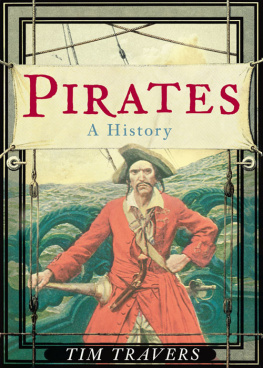

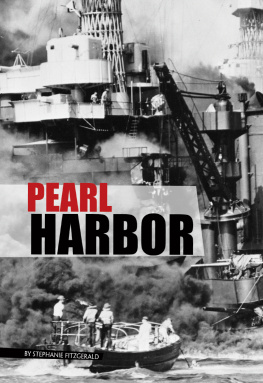
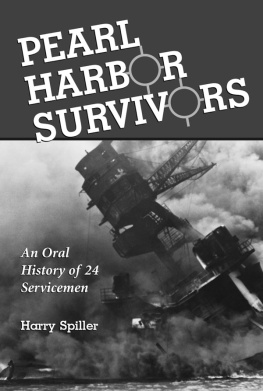

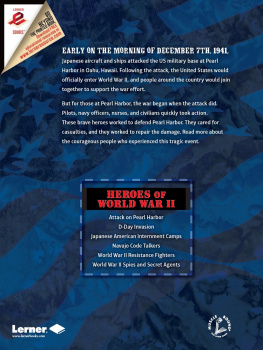
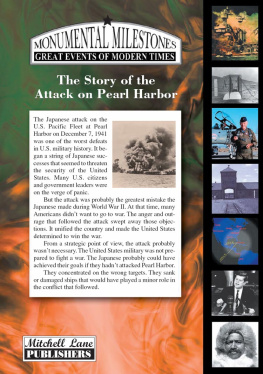
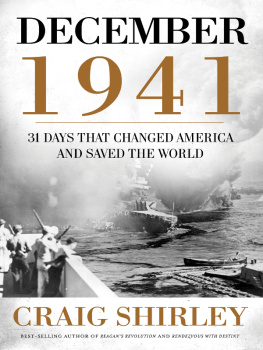
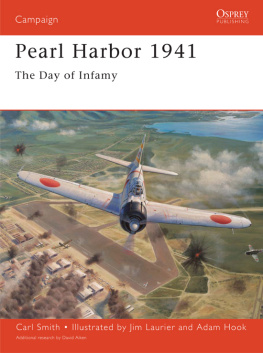
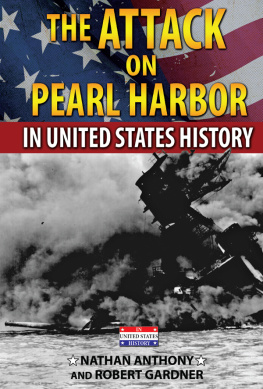


 The paper used in this publication meets the minimum requirements of American National Standard for Information SciencesPermanence of Paper for Printed Library Materials, ANSI/NISO Z39.48-1992.
The paper used in this publication meets the minimum requirements of American National Standard for Information SciencesPermanence of Paper for Printed Library Materials, ANSI/NISO Z39.48-1992.